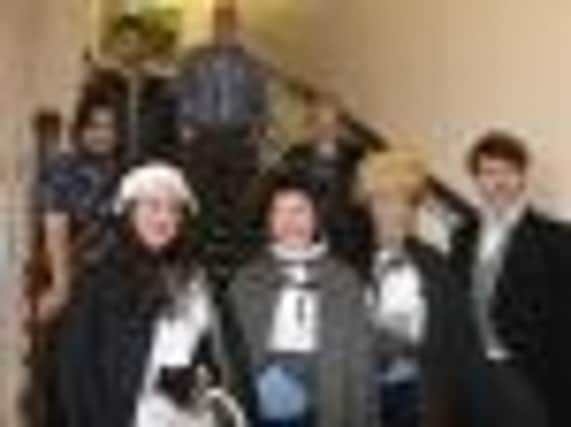Gateway to the southside


Whether it’s trawling the Mitchell library for archive material or investigating a grandparent’s high-stacked loft, there are always hidden gems waiting to be uncovered.
Enter a £49,400 project funded by the National Lottery Fund, in association with Oxfam, which aims to make a detailed record of the social history of Govanhill – an area known as a gateway to Glasgow.
Advertisement
Hide AdAdvertisement
Hide AdLaunched last week, the Govanhill People’s History Project is looking to recruit 15 southside volunteers to collect and record the stories of 225 people who live or have lived in the area.
The project will explore the contribution of migrants – many of whom moved on to Crosshill and our own southside neighbourhoods – to Scottish society, and will include research into public archives as well as individual stories.
The initiative was brought to life last week with the help of Queen’s Park church’s drama company, Theatre École, as its young members donned Victorian costume at the launch.
Bob Marshall, currently working on the project, commented: “Since the second half of the 19th century, Govanhill has been a springboard for migrants from all over the world.
Advertisement
Hide AdAdvertisement
Hide Ad“Different people arrived at different times – from other parts of the lowlands, from the highlands and islands, from Ireland, from India and Pakistan, Italians and from eastern Europe – especially Jews – and now Slovakian and Romanian Roma.
“Many of them saw Govanhill as a great area – a place where they could build a better, safer life for their families. Their history is the history of Glasgow and of Scotland”.
The project is garnering support throughout Glasgow, including the Scottish oral history centre at Strathclyde University and Glasgow Life’s museums and libraries service.
The Scottish Jewish Archives Centre is also involved, and centre director Harvey Kaplan – also a southsider – said: “One of the first areas to welcome Jews moving out of the Gorbals was Govanhill, where Jewish services were first held at the beginning of the 20th century.
Advertisement
Hide AdAdvertisement
Hide Ad“Jewish settlement in the area grew rapidly, probably peaking in the 1950s or 1960s, but today very few Jews live there”
Anyone interested in finding out why can volunteer to work on the project – or to have their own story told – by contact Linda Fleming on 423 5035, or [email protected].
The end result will be published in book and CD format – with summaries in different languages – as well as on the People’s History website.
Who knows, you may discover something of your own history stretching back to Govanhill...